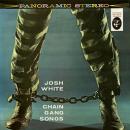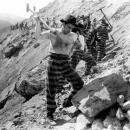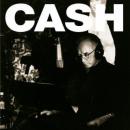Gonna tell you the story
About old Lost John
Lost John was a boy that got loose
From a chain gang down in Louisiana
About sixteen bloodhound, took in after him
Sheriffs, deputies
And everybody else in the county
Chasin’ him all across the swamp
Lost John outrun the bloodhounds there
All night long, it was long towards mornin’
He looked up to the tree there
And seen the lights from a house
He didn’t know whether the people inside
Was friends or were enemies
So he wanted to go up to the house
So, and asked if he could stay there
To get away from the bloodhounds
He was afraid if he did go up there
That the people might set their dogs
Barking at him or shoot him down
With a Winchester rifle
This is the story about Lost John
Old Lost John ain’t lost no more
About old Lost John
Lost John was a boy that got loose
From a chain gang down in Louisiana
About sixteen bloodhound, took in after him
Sheriffs, deputies
And everybody else in the county
Chasin’ him all across the swamp
Lost John outrun the bloodhounds there
All night long, it was long towards mornin’
He looked up to the tree there
And seen the lights from a house
He didn’t know whether the people inside
Was friends or were enemies
So he wanted to go up to the house
So, and asked if he could stay there
To get away from the bloodhounds
He was afraid if he did go up there
That the people might set their dogs
Barking at him or shoot him down
With a Winchester rifle
This is the story about Lost John
Old Lost John ain’t lost no more
envoyé par The Lone Ranger - 30/7/2010 - 11:29
×
![]()








Nella raccolta “Chain Gang Blues” (1976)
Nel corso della sua carriera Sonny Terry collaborò con grandi artisti come Blind Boy Fuller, Brownie McGhee, Cisco Houston e Woody Guthrie. E proprio con questi ultimi due registrò negli anni 40 parecchie canzoni. “Lost John” è presente infatti nell’album “Struggle” di Woody Guthrie, realizzato nel 1976 dalla Folkways Records.
Sulle “chain gangs”, le squadre di detenuti alla catena costretti a lavorare dall’alba al tramonto sulle strade, nei campi e nelle cave di pietra in tutti gli States fino alla metà degli anni 50, si vedano anche Another Man Done Gone, Chain Gang, Cryin' Who? Cryin' You! (Part I & II), Nine Foot Shovel e No More Chain Gang. Il sistema delle “chain gangs” era una fonte inesauribile di manodopera a costo zero e, considerato che i neri sono sempre stati la maggioranza della popolazione carceraria, un modo per perpetrare lo schiavismo anche decenni dopo la sua abolizione.